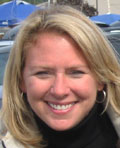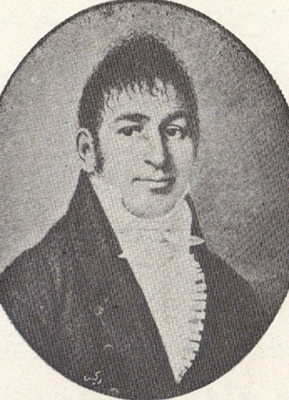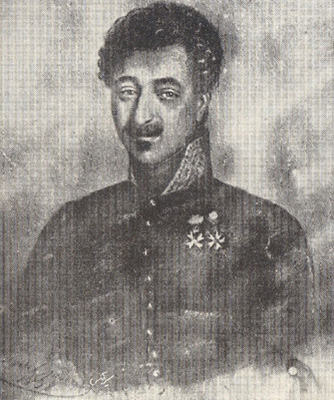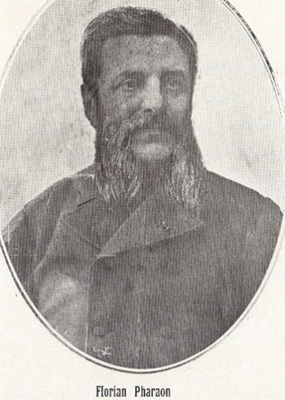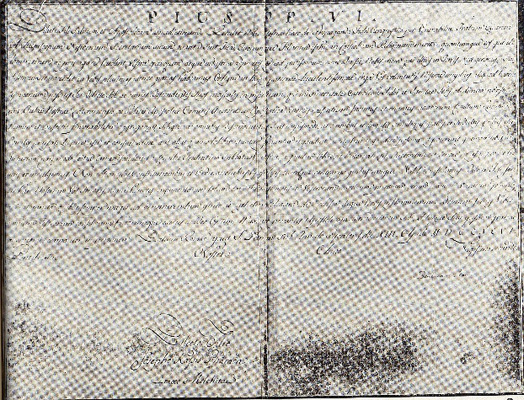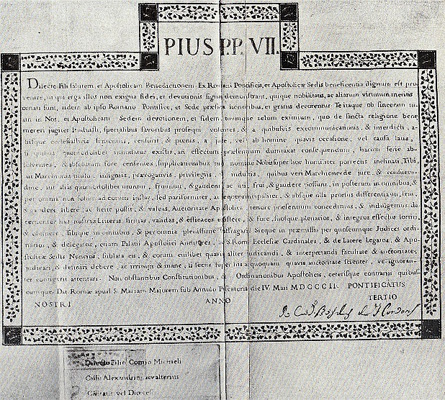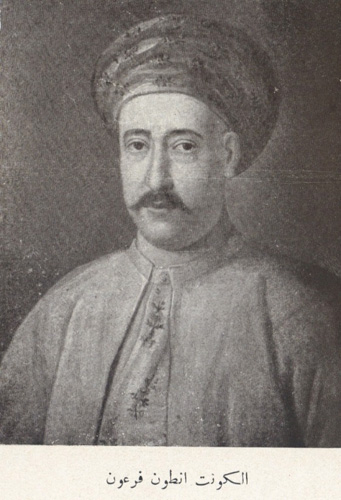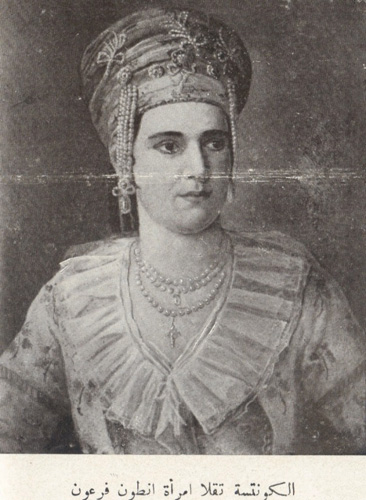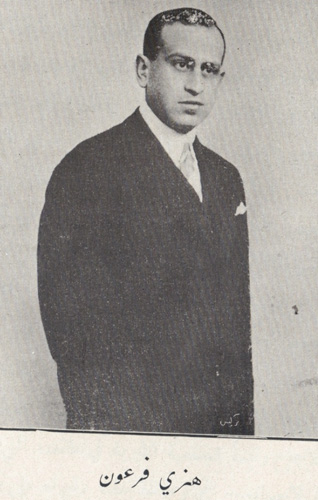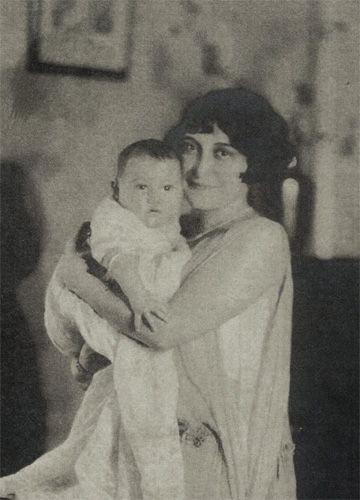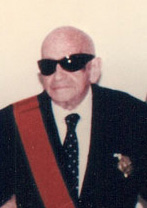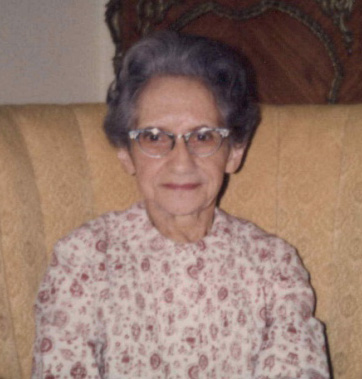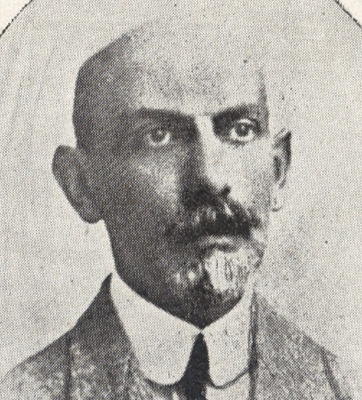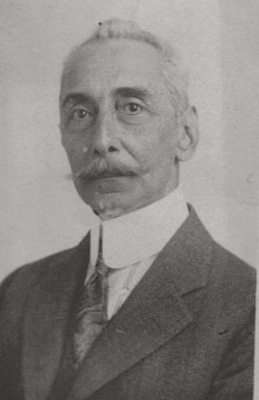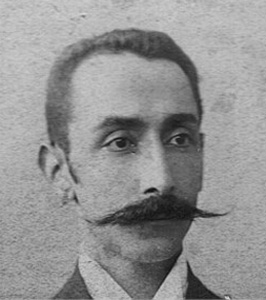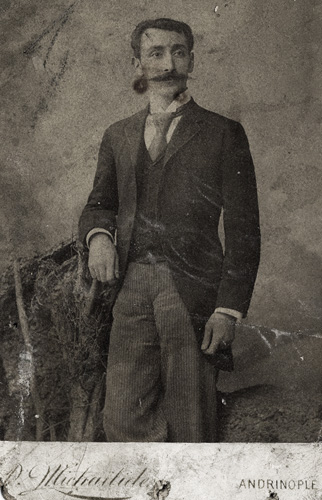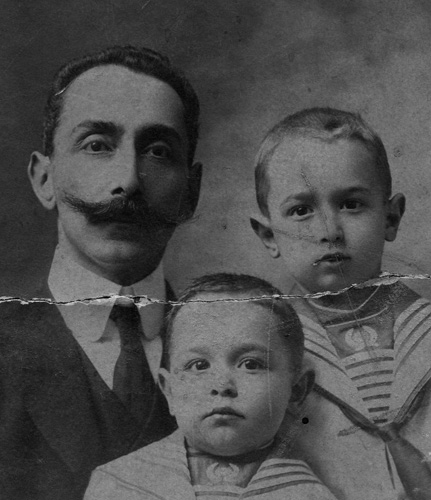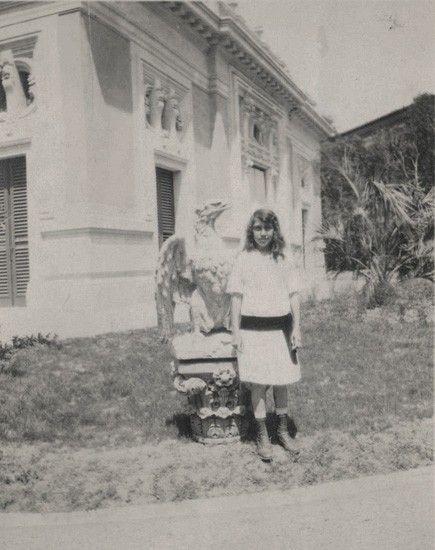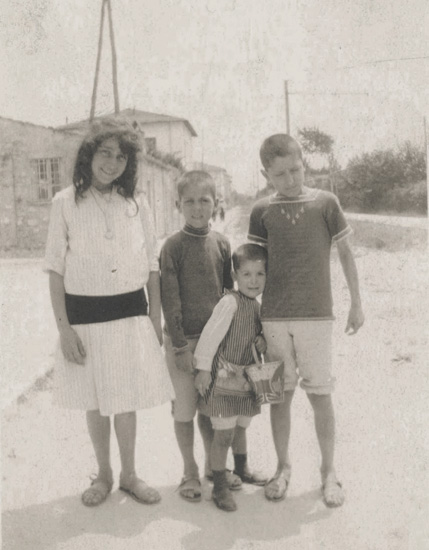The Pharaon Family
From Damascus to Manhattan, Pharaon descendants thrived in business, politics, religion, education and the preservation of antiquities.
Beginning with our earliest memories shared about our Turkish roots, we knew our Faraon ancestors actually spelled their surname Pharaon. It was known the Pharaons lived in France and Egypt, but later it was discovered we were descended from a Syrian family that emigrated in 1724 from the Hauran plain to Egypt. Family members scattered to ports circling the Mediterranean, all sharing the same lineage, and leaving their mark in cities and countries in Europe and the Levant, from the 1200’s through today.
Research revealed dozens of books highlighting the lives of various Pharaon family members who were well known in Trieste, Lebanon, France, Egypt and Turkey.
Elias Pharaon was a translator for Napoleon’s Egyptian campaign. He was a primary translator for Bonaparte during the campaign in Egypt between 1799 and 1801, he was General Kleber’s translator after Napoleon left the region. Elias Pharaon arrived in France in 1802. Napoleon named him Count of Baalbek and he appointed Elias Consul of France to the Greek Islands.
|
|
|
|||
Elias Pharaon 1774-1837 |
Joanny Pharaon 1801-1846 |
Florian Pharaon 1827-1887 |
Elias’ brother, Joseph, worked with Clot Bey, Joseph translated medical journals, he was a contributing factor in establishing the first hospital in Egypt. Elias’ son Joanny, was born in Egypt the year Napoleon pulled out of that country. Joanny followed the footsteps of his father, he was a military interpreter. Joanny Pharaon was the personal interpreter for his father’s friend General Duke Rovigo during the invasion of Algeria. Joanny settled in France before and after his assignment in Algeria, Joanny was the first professor of Arabic at Colleg d’Alger, he was educated at Ecole des Languages Orientales in Paris, he also taught at Ecole Egyptienne and Saint Barbe Lycee, Joanny coauthored Histoire de la Revolution 1830.
Joanny was made a Chevalier du Saint-Sépulcre de Jérusalem, he received the Legion of Honour and Joanny was also a Freemason. Joanny’s son, (Elias’ grandson) Florian Pharaon, was also a translator and an author.
Florian Pharaon was the first Arab Editor for Le Figaro, he wrote for both Le Figaro and Les Debats. As a reporter, he covered the opening of the Suez Canal and wrote numerous books that are still in print today including Spahis Turcos et Gormiers. Florian was awarded the honour of ‘Knight of the Medjidié’, bestowed by the Sultan of Turkey, Florian was also an advisor to Napoleon III.
More information on these Pharaon family members is detailed in a report written by Alain Messaoudi of the University of Nantes.
Ian Coller’s Arab France and Thomas Philipp’s Syrians in Egypt provide insightful information about the French branch of this family and how they affected education, journalism and politics.
Syrians in Egypt also offers substantial background on the climate in Egypt in the late 1700’s, Philipp writes about the political turmoil faced by Elias’ cousins; Antonio Cassis Faraone and Joseph Cassis Faraone.
Ali Bey appointed brothers Joseph/Giuseppe and Antonio Cassis Pharaon (Faraone) to positions within various customs sites in Egypt. Antonio was the Chief Customs officer at Damietta then named Manager of Customs for all of Egypt in Cairo. Eventually each man left his post in Egypt during the political turmoil between the ruling Beys of Egypt. After several years as Manager of Customs, Antoine’s life was threatened and in 1784 he fled to Livorno before settling in Trieste. After Antoine’s departure, his brother, Joseph was appointed Manager of Customs. Within a few years, political unrest forced Giuseppe to flee the country too, he followed Antonio to Livorno then Trieste. Both Joseph and Antonio were awarded Papal Knighthoods.
|
|
Once settling in Trieste, the brothers committed themselves to the region. Witness especially Antonio, whose efforts are still apparent to this day. Antonio took great pains to protect antiquities; he purchased the Jesuit compound Precenicco.
Antonio Cassis Faraone was the force behind the preservation of the former Roman town of Aquileia, where he purchased countless pieces from famed collector Giandomenico Bertoli, while Cassis Faraone added to the collection with items he brought with him from Egypt. - info:
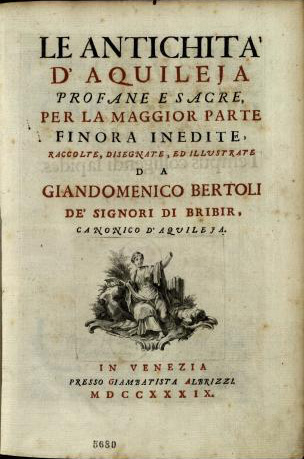 |
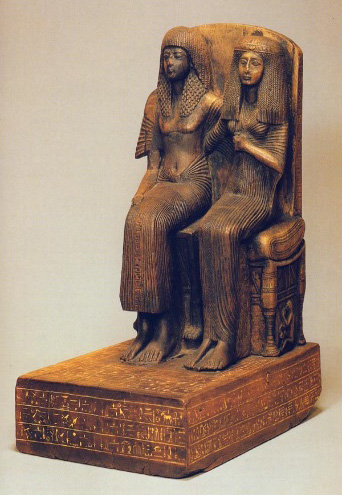 |
Antonio Cassis Faraone 1745-1805 |
Tecla Ghebarra 1750-830 |
For more information about Antionio Cassis Faraone please see Maria Fantini’s Antonio Cassis Faraone: ritratto di un imprenditore levantino alla fine del ’700.
The children of Giuseppe Cassis Faraone eventually used the surname “Cassis”. Giuseppe Cassis Faraone’s great grandson, Giovanni Cassis, was a Prefect in Milanand Venice - info 1 - info 2:
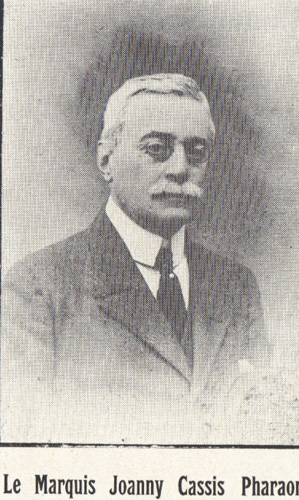 |
Photo courtesy of Tariq Usrat al Fir’aun
Fortunately, Joanny Cassis kept his great grandfather’s historical documents and shared the story of the family’s history in Syria with relatives in other countries.
From Fr. Conastantin al Bacha’s Tariq Usrat al Fir’aun:
A branch of this dignified family now lives in the great city of Rome. The head of this family, his honor the noble Marquise You’hana Cassis Pharaon sent me a copy of a historic document in Italian, translated in 1786 from its original Arabic which was lost. He kept his copy since the time of his great grandfather Count Youssef Pharaon. (of Trieste)
Every author that writes about the Pharaon family history quotes Basilian Salvatorian priest Fr. Constantin al Bacha, who, at the behest of the late Henri Pharaon, wrote Tariq Usrat al Fir’aun in 1937. Al Bacha wrote a beautiful book extolling the lives of family members who made an impact in various countries; whether working with their governments, taking part in military campaigns, at the center of banking, journalism, imports, exports, owning or managing shipping companies. Members of this family left their mark in their home countries for centuries. The chapters that have been translated into English can be found here.
While al Bacha did exemplary work, a certain amount of his reporting was based on supposition. Al Bacha identified all the branches of the family but how he made specific connections is not always clear. Al Bacha, We are aware that we haven’t attained perfection in this work of ours, for inevitably some things that deserve to be mentioned here, eluded us and didn’t come to our knowledge.
It is clear, however, that some information was based on assumptions made by Henri Pharaon. Pharaon surely meant well but conjecture was passed on to al Bacha. Henri Pharaon was an influential Lebanese politician, among his countless accomplishments he was influential in establishing the independence of Lebanon and helped to form its government and policies. Henri is credited with the design of the flag of Lebanon. Family members are still active in the Lebanese government where they are still an integral part of the fabric of the country, still thriving today-the company R. Pharaon et Fils which was founded in 1868. Henri Pharaon wanted to ensure his family’s heritage was remembered. Several authors have written about Henri Pharaon, his extensive political family and the impact he had on Lebanon, including Lebanon's Quest: The Search for a National Identity, 1926-39 By Meir Zamir. - Henri Pharaon’s obituary:
Henri Pharaon and another distant cousin, Antoinette Faraon, were born one year apart and died within weeks of each other. He was born in Alexandria, she was born in Constantinople. Below is a picture of Henri Pharaon’s home in Beirut. The picture was discovered in Antoinette’s family archives in the United States. A UNESCO official in Beirut has confirmed the picture in Antoinette’s archives is of Henri’s home.
Henri Pharaon 1901-1993 - Photo courtesy of Tariq Usrat al Fir’aun |
Antoinette Faraon 1900-1993 - From the personal archives of Antoinette Faraon |
|
|
Philippe Pharaon 1869-1923 - Photo courtesy of Tariq Usrat al Fir’aun |
Joseph Faraon 1865-1927 - From the personal archives of Antoinette Faraon |
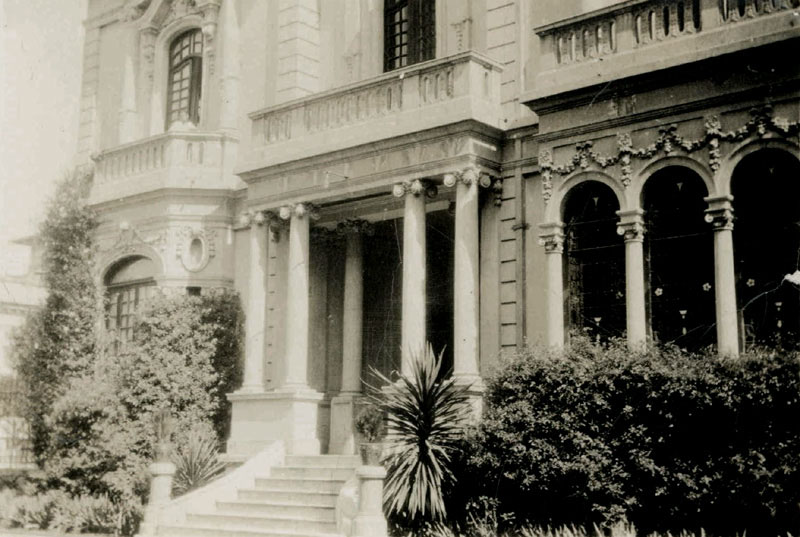 |
Philippe Pharaon, Henri’s father, built this home and Henri filled it with antiquities from the Middle East. It is currently the Robert Mouwad Museum - info:
Did the cousins ever meet? How did Antoinette end up with a picture of Henri’s home? At this point, it is impossible to know.
Joseph and Antoinette Faraon lead us to the Pharaon family that lived in Turkey. Livio Missir wrote that the first Pharaon men settled in Smyne circa 1800, and that Gabriel and Antoine Pharaon were “brothers or cousins.” Missir also cites al Bacha. However, when al Bacha describes the Pharaon family in Turkey, it is clear that some facts are missing.
(Nicola Pharaon) Nothing is known about him, or any of his progeny, other than this. We believe that the Pharaons, some of whom were renowned in Izmir in the nineteenth century, are of his progeny, and that their grandfather came to Izmir form Venice where he resided as did many Venetian merchants, and where they were numbered at thousands. Among whom is the deceased Anton Pharaon, who was a senior clerk in the Ottoman Bank in Beirut, at its beginnings, then the first manager of the said Bank in Damascus, and is considered as the founder of the Ottoman Bank in Damascus. He was well known by many Sheiks in Damascus and Beirut. He died and was not survived by any children.
He had a brother, whose name we do now know, and who was slaughtered in Damascus in 1860 with the deceased Hanna al-Anhory in his home as he was residing in Damascus as his guest at the time. His children and grandchildren all left Izmir to America on the wake of the war that erupted between the Turks and the Italians as a result of the occupation by the Italians of West Tripoli in 1911. As we could not contact any of them since we did not know their place of residence, our information about them remains sparse.
Livio Missir provides more substantial details about the Smyrne branch in his book:
Latines familles de l’empire ottoman,
“UNE FAMILLE MELKITE CATHOLIQUE DE SMYRNE : LES PHARAON ET LEUR DESCENDANCE INTERNATIONALE”
La descendance d’Antoine Pharaon
Antoine Pharaon est, comme déjà dit, à l’origine d’une nombreuse progéniture. Il a épousé Marguerite Missir, fille d’un drogman de France à Smyrne et soeur, entre autres, de Grazia Topuz (cf. notre exposé au Congrès de Liège) ainsi que de Paul Missir, dont la femme est la soeur du marquis Edmondo Giustiniani.
Des deux fils d’Antoine Pharaon l’un part pour les États-Unis d’Amérique et c’est là qu’il s’établit et atteint une position honorable dans la banque, à New York. On manque de ses nouvelles depuis plusieurs dizaines d'années. L’autre fils, qui s’appelle Antoine, comme son pére, fait aussi une brillante carrière dans la banque et est directeur de la Banque Imperiale Ottomane à Manisa (Magnèsie du Sipyle), près de Smyrne. 1 Le gouvernement ture lui confère titres et honneurs et son nom, précède du titre d’Excellence, figure, en mème temps que celui de sa femme Marie Pharaon, née Dorsharmet (apparentée aux consuls du Portugal, du mème nom, à Smyrne), parmi ceux des bienfaiteurs de l’église Notre-Dame-de-Lourdes de Göztepe, près de Smyrne.
Outre ces deux enfants, Antoine Pharaon a encore six filles dont la première, Alexandrine, mourra très àgée après avoir vécu la mort de son mari (un Balladur appartenant à la famille armèno-persane de Smyrne, du mème nom, dont fait partie Édouard Balladur et de ses deux enfants. Une autre, Soeur Josephine (ex-Soeur Mélanie d'après l’usage de ces religieuses qui changent de nom en changeant de couvent), sera Fille de la Charité à Smyrne et à Naples où elle mourra au début de ce siècle; une troisième, Hélène Pharaon, épousera un négociant francais de Smyrne, Francois Roboly, dont l’ancètre fut chargé d’affaires de France à Constantinople au XVIIe siècle; une Marie Pharaon, épousera Antoine Franceschi, descendant du premier consul des Deux-Siciles à Smyrne vers la fin du XVIIF siècle, et la cinquième, Doudou Pharaon, épousera Charles Pagy, un négociant francais dont les descendants sont encore parmi les principaux exportateurs de produits du sol de Turquie à Smyrne. Enfin Vittoria, mariée à Parodi.
Although he does not name him specifically, when Missir writes-“l’un part pour les États-Unis d'Amérique et c'est là qu’il s’établit et atteint une position honorable dans la banque, à New York. On manque de ses nouvelles depuis plusieurs d’années dizaines”- there is little doubt that Missir is referring to Joseph Pierre-Marie Faraon, the father of Antoinette Faraon. The confusion lies in the fact that many assumed Joseph was Antoine’s brother, however, Antoine Pharaon (jr) and Marie Dorsharmet Faraon were said to be Joseph’s paternal uncle and aunt.
According to Antoinette Faraon, her father, Joseph Faraon, was born during the cholera epidemic of 1865. Joseph’s father, Pierre Faraon, tried to protect his wife from the epidemic spreading East from Egyptian ports where the outbreak began. Expecting their third child, Pierre sent his wife, Meropi Cocchino Faraon, outside the city of Smyrne, and up into the mountains to try to protect her from the epidemic. Sadly, Meropi contracted the disease and died giving birth to Joseph. Joseph’s father, Pierre Faraon, remarried but within a few years tragedy struck again. The two older siblings of Joseph died of typhoid fever when Joseph was five years old. As the story goes, Pierre was devastated. Childless, Antoine and Marie Faraon offered to adopt Joseph. Antoine and Marie raised Joseph, sent him to a Jesuit boarding school in France, and in 1884 Joseph returned to Smyrne and began working at the Ottoman Bank at the age of 18.
|
|
Joseph Faraon and his sons circa 1900 |
Joseph Faraon circa 1925 |
A contact at the Ottoman Bank Archives (SALTonline) provided details from Joseph Faraon’s personnel files, describing his assignments: Adrianople 1884, Balkesir 1891, Istanbul 1892, leaving the bank in 1897. On his application, he named Antoine Faraon as a reference, and stated that he was fluent in French, English, Greek and Turkish. Also from the SALT archives, an invitation sent by Mr. and Mrs. Antoine Faraon of the Ottoman Bank, 1883
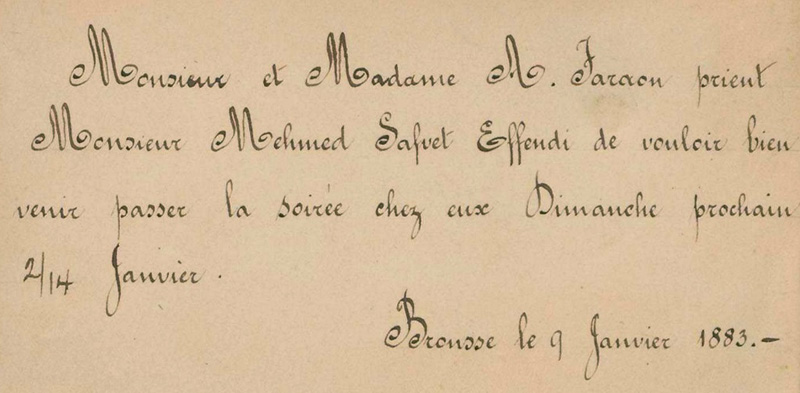 |
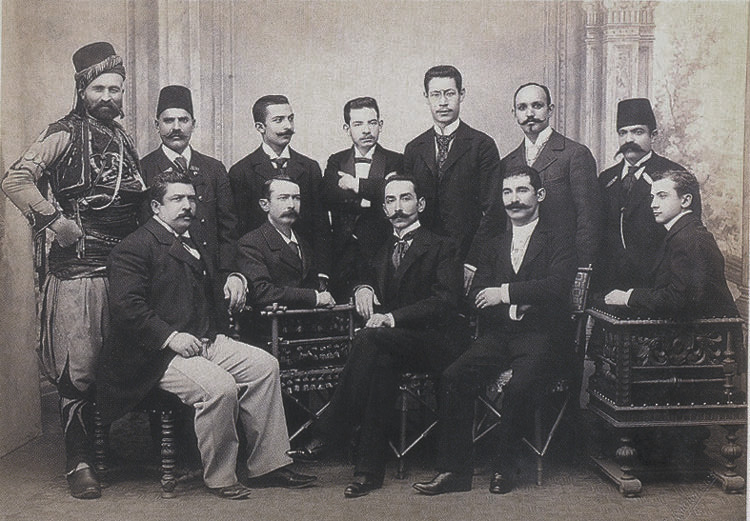 |
The picture above is from the Ottoman Bank archive website, the group of men worked in the Pera branch in 1896, Joseph Faraon is seated in the center of the row.
Little is known of Pierre Faraon, Joseph’s father. Antoinette Faraon said her grandfather, Pierre, was in Smyrne to open an office in Turkey for a French newspaper in the mid 1850’s. We believe that Pierre died in the mid to late 1870’s because his son, Joseph, learned of Pierre’s death when he was a teenager living at a boarding school. A priest called Joseph to his office and delivered the news that Pierre had died. More is known about Joseph’s mother, Meropi Cocchino, thanks to the research efforts of Jacques Caporal and Marie-Anne Marandet. Meropi was a descendant of the Cocchino family of Chios, Meropi was the seventh of eight children born to Eustachio Cocchino and Marigho Marcopoli, Meropi was a great-great granddaughter of Margherita Giustiniani.
Below courtesy of Marie-Anne Marandet and Jacques Caporal- “On August 6th (1834), the Rd Father D. Giovanni Datodi, with "ordinario" commision, had baptised in St Isidoro Church, Mirope, born first (or third) of the same month, daughter of Eustachio Cochino and Marigho born Marcopoli his legal wife. Godfather was Michele Cochino and godmother Franga Castelli, born Marcopoli”.
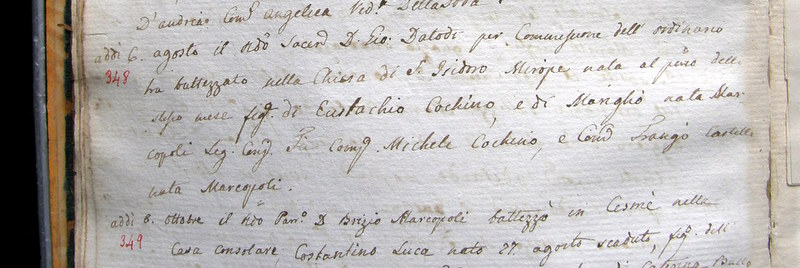 |
Meropi Cocchino is also named in the marriage record for Joseph Faraon and Henriette Cooper - courtesy of Jacques Caporal and Marie-Anne Marandet.
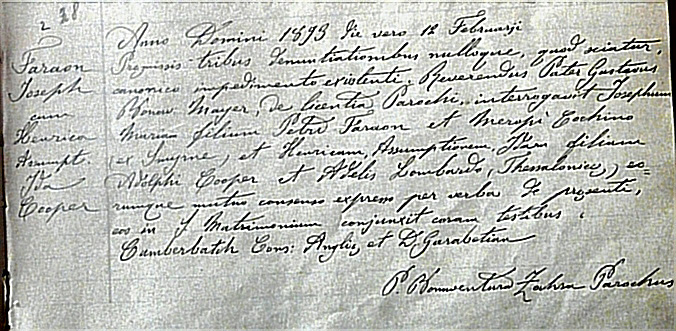 |
After returning to Turkey and beginning his career at the Ottoman Bank, Joseph met and married Henriette Cooper - more on this family - Joseph and Henriette had 4 children, Alexandra Marie, Adolphe Joseph, Rene Joseph, and Antoinette Marguerite. After his successful career at the Ottoman Bank, Joseph turned down an opportunity to work with a Pharaon relative in Alexandria and moved his family to New York. Henriette died in 1922, Joseph died in 1927.
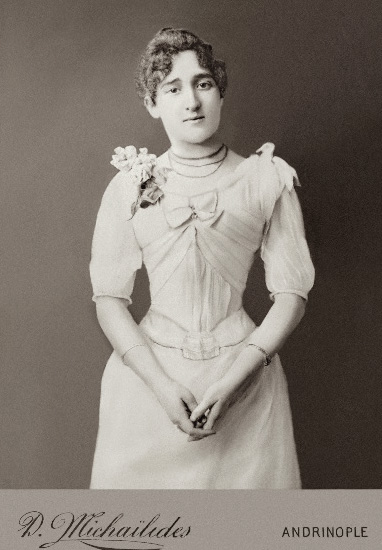 |
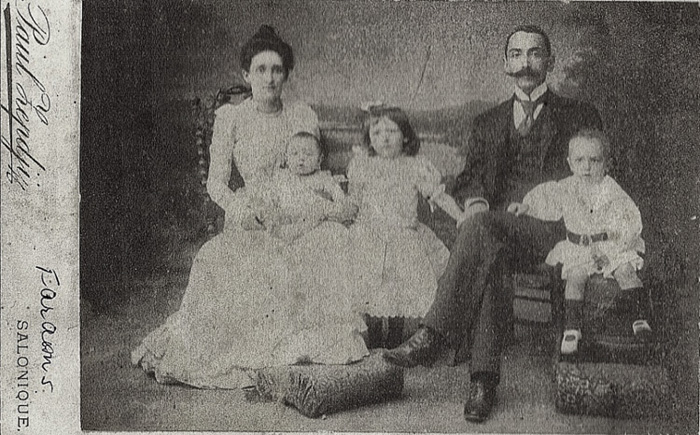 |
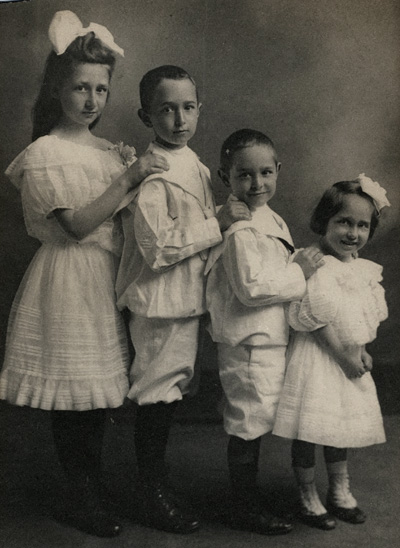 |
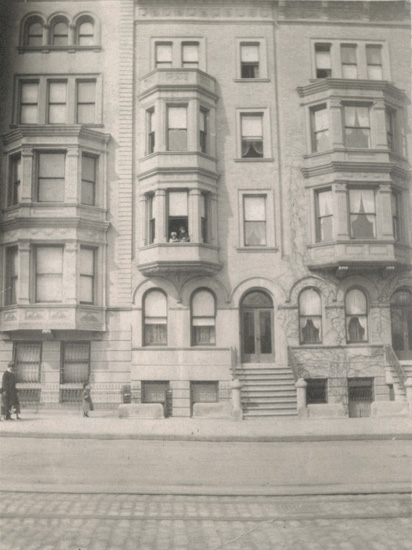 |
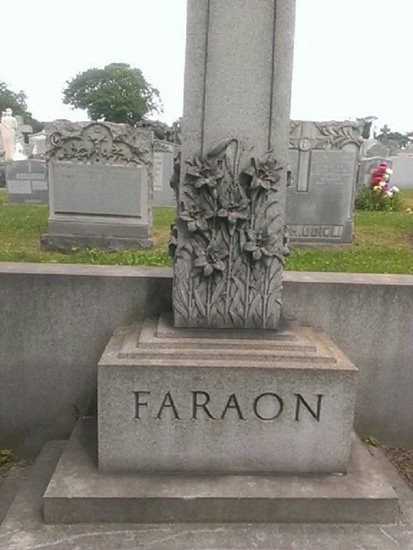 |
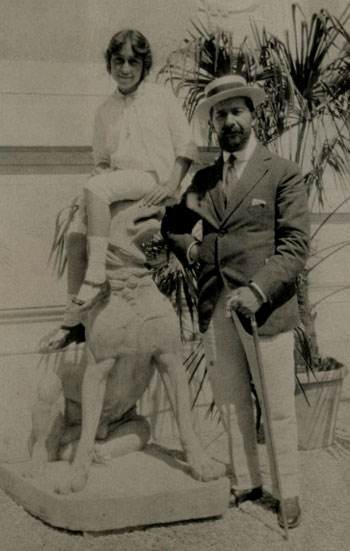 |
|
|
After the death of Joseph Faraon in 1927, the children of Joseph Faraon lost contact with Faraon relatives. Joseph was in contact with his Faraon relatives when he was alive, often visiting them when he was on business in the Levant.
When it comes to the Pharaon-Faraon branch that settled in Turkey circa 1800, “brothers or cousins”, Gabriel and Antoine Pharaon Sr. (married first cousins Sarah and Marguerite Missir) we cannot yet prove which branch Antoine and Gabriel are descendants. Several descendants of various lines could have travelled to Smyrne to establish a stronghold for the family business. Nevertheless, it was common knowledge that the Smyne Pharaons were members of the larger Pharaon clan descending back to Michel Ibn Nima al Ahmar who was first given the name Fir’aun “the feared”.
Fr. Constantin al Bacha clearly states that all the branches mentioned in his book, and here in this article, families that circled the Mediterranean in the 1800’s, are descended from the original family in Syria. The original surname was al Ahmar, the ancestor Mikail ibn Nima al Ahmar was given the title “Fir’aun”.
Al Bacha-
…….priest called Mikha'il characterized by his zeal, piety, good management and sound reason in an outstanding way. He was respected and dignified by Sheiks, and prominent figures, and feared by rogues and ignorant youths. He was so courageous, valiant, and fearless in his deeds that he was held in high esteem by all people, and obeyed by the obstinate and the audacious.
He was also much appreciated by the Patriarch. If the latter had difficulty managing any issue, he referred it to Father Mikha'il, who then handles it in the best way possible. If the Patriarch also lost patience in his endeavors to reform a group of people, he used to threaten and daunt them with him and by delegating him in all matters concerning any dispute among them. By way of intimidating them and daunting them, he used to call him Pharaon [meaning Pharaoh], hence he, and his progeny were mostly known by this name.
The said person thus lived in the fifteenth century. Hence, the great grandfather of the house of Pharaon was called Ne'ma, and had a son called Mikha'il Pharaon, who is the aforementioned abbot, who had a son called Atta or Attallah. The said Attallah had a son called Youh'ana, who had a son called Atta as well. This Atta, also, had a son called Youhana, who is his firstborn, named after his grandfather Atta, then he had Ibrahim. This latter, Ibrahim, gave birth to Franssees and his two brothers Youssef and Anton Pharaon in the city of Damascus, where they received the sacraments of Baptism and Confirmation, by virtue of the Greek rite conducted by the then Catholic priest, as verified by the signature of witnesses at the end of this document.
Al Bacha on another Pharaon/Fir’un ancestor, Patriarch Dorotheus:
Patriarch Dorotheus… He then freed the Christians from the yoke of the Muslims by paying the tax money of the foreign communities or the taxes paid for the prince, and he assigned the task of collecting this money to Christian men who then collected the money from those who should pay it and delivered it to the ruler or Prince. Then he resisted some rulers because of their injustice to Christians, he travelled to Asitane conveying a complaint against the governor of Antioch, and he did not return til the former was removed from his position.
As consequence, he had enemies among the Muslims and lowly Christians as well, who paid a lot of money to have him removed from his position, but they failed to. But eventually, they poisoned him resulting in his sudden death.
The majority of Pharaon families left Damascus for Egypt in 1724 during the time of the schism between the Melkite Catholics and the Greek Orthodox Church of Antioch. They found success in Egypt-
Anton Pharaon, and others among his sect, upon assuming the position of manager of Customs, appointed his brothers, cousins, and his fellow Levantines as assistants working as clerks, supervisors, workers, and servants, in the branches of this administration in Damietta, Beaulac, Rosetta, Alexandria, and other places, as did the Jews before, and as did the Copts in the administration of crops taxes since the manager depended on the loyalty of his kinsmen to serve in this administration which they deemed a matter of public interest in which they should share its service, the profit and benefits. The manager treated the merchants in an empathetic way especially when it came to estimating the price and quantities of merchandize at the Customs, which didn’t take place meticulously and accurately as is the case today. Rather, it used to take place on basis of consensus between the Master and the owner of merchandize in an arbitrary way.
The bonds of friendship and affection have grown between those working in the field of trade and different industries. Moreover, their offspring were connected by spiritual, physical, and social connections through baptism, confirmation, matrimony and marriage. Hence, they were intertwined in a large family bringing together their family members and offspring in strong unison consolidated by their common interests, the unity brought about by the Catholic faith to which they were all devoted, and the unity resulting from their shared lineage that brought their hearts together in natural affection, along with the unity of belonging to the old homeland in the Levant together with the unity of sharing the new Egyptian homeland. This unity is a requirement of their being in a country of immigration, where an expatriate is a kinsman of his fellow expatriate.
And so it began, after fleeing religious persecution in Syria, the Pharaon family found success in Egypt. Brothers Antonio and Giuseppe eventually moved on to Trieste. The younger brother of Antoine and Giuseppe, Francis Pharaon, is known to be the forefather of the Lebanese branch of the Pharaon family. The late Henri Pharaon is a descendant of Francis. As previously mentioned, Elias Pharaon signed on with Napoleon, after Elias fought and was injured in the battle of Tabor, Elias eventually moved his family to France, his descendants are still in France today. The achievements of other Pharaon cousins can be found in Fr. Constnatin Al Bacha’s Tariq Usrat al Fir’aun. Overall, the family was comprised of faithful, educated, tolerant people armed with a business acumen that was critical during a period of dramatic economic expansion. Al Bacha states in his final pages, a timeless, poignant message, describing Henri Pharaon and his ancestors:
A man taught by himself, and by his grandfathers to surmount obstacles and sacrifice the coveted. He greatly encouraged me to accomplish this work of history to fulfill the desire of his deceased father and to honor his departed family members who no doubt deserve to have their good memories made known to the public.
After reading the work of al Bacha, and knowing how much his family’s history meant to Henri Pharaon, I continue to work to uncover as much information as possible regarding all the branches of this fascinating family. I feel as though I owe it to my grandmother, Antoinette Marguerite Faraon Glennon, Please contact me if you have any questions or if you have any information to pass along to me, nothing is insignificant. jeanneglennon[at]gmail.com
